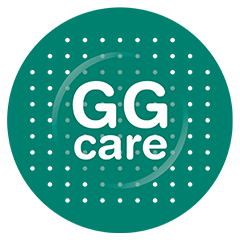Did you know that a gesture as simple as hugging can influence health and improve diseases? We explain six reasons why you should hug every day. We are sure that they will help you turn this gesture into a daily ritual of complicity, well-being and happiness!
Why should we hug each other every day?
-
It is a therapy to reduce stress and improve health: When you suffer from stress, the body responds by preparing for a dangerous situation: it generates cortisol (the stress hormone) and adrenaline, It raises heart rate, blood pressure and glucose to increase energy, dilates the bronchi for greater oxygenation and reduces circulation in some areas to redirect it to the muscles. This response prioritizes the emergency and the body stops focusing on other functions. Therefore, if stress is constant, the body becomes accustomed to functioning at its limit, leaving basic activities behind, and it can decompensate. When receiving a hug, the brain secretes oxytocin, a hormone that acts on the nervous system, generating positive and calming emotions. In this way, it manages to reduce the levels of cortisol (1) and, consequently, be a therapy to prevent and alleviate the symptoms of diseases related to stress (2).
-
It is the antidote to happiness and well-being: Irritability, negativity and bad mood are due to the decrease in dopamine, the hormone of happiness. Negative emotions can cause us to act uncontrollably and are often channeled through oxytocin-producing situations, such as food. It has been shown (2) that the oxytocin produced by a hug attenuates the negativity of a bad day. The nerve endings in the skin send the stimulus of the hug to the brain, which quickly translates it into comfort, pleasure and positivity. Thus entering a happier emotional state and greater well-being.
-
It transports you to childhood, generating self-confidence: The hugs received during the first years of life are recorded in the nervous system. In this way, a hug in adulthood refers to the feeling of affection, protection and comfort that the mother, father or relatives provided when being a baby. A feeling of “comfort zone” that generates confidence and self-assurance to face day-to-day problems.
-
Provides tranquility, improves fear and sleep disturbances: Fear is an emotion that can cause anguish, anxiety or panic (if anxiety gets out of control). Levels of the stress hormone cortisol increase with fear and can disrupt sleep. In fact, a large percentage of insomnia cases are caused by stress (3). Physical contact regulates cortisol levels, calms the nervous system and provides confidence to control and cope with the situation, contributing to better rest.
-
Relaxes the muscles: Hugs stimulate tissue circulation, release muscle tension and relax. Oxytocin acts on the tissues that are responsible for contraction and relaxation movements, transmitting tranquility.
- Teach values, generate bonds and emotional relationships: A hug improves social relationships. It makes you feel good and creates emotional bonds, empathy and trust towards the other person. It is a reciprocal gesture that teaches giving, receiving and understanding. People who hug frequently have greater oxytocin, less cortisol, and a stronger, longer-lasting bond.
References:
1. Cohen, S., Janicki-Deverts, D., Turner, R. b., & Doyle, W. J. (2015). Does hugging provide stress-buffering social support? A study of susceptibility to upper respiratory infection and illness. Psychological science, 26(2), 135–147.https://doi.org/10.1177/09567976145592842. Murphy, M., Janicki-Deverts, D., & Cohen, S. (2018). Receiving a hug is associated with the attenuation of negative mood that occurs on days with interpersonal conflict. PloS one, 13(10), e0203522.https://doi.org/10.1371/journal.pone.02035223. Viniegra Domínguez, M. TO, Parellada Esquius, N., Miranda de Moraes Ribeiro, R., Parellada Pérez, L. M, Planas Olives, C., & Momblan Trejo, C. (2015). Integrative approach to insomnia in primary care: Non-pharmacological and phytotherapy measures compared to standard treatment. Primary Care, 47(6), 351–358.https://doi.org/10.1016/j.aprim.2014.07.009 |

